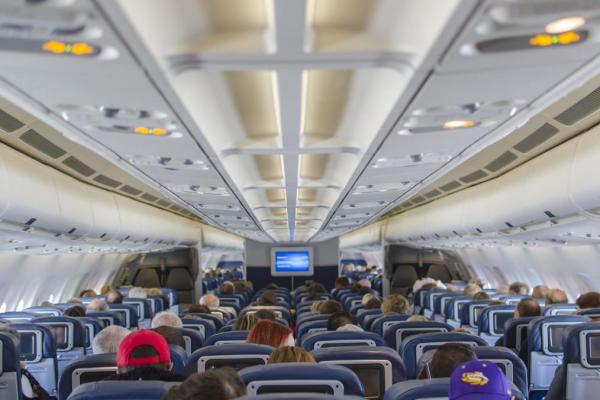
Sept. 2 (UPI) — New research out of Florida State University has offered policy makers new strategies for limiting the spread of disease among airline passengers.
Computer models suggest revised boarding procedures and the use of smaller plane cabins could reduce the risk of infection during a serious disease outbreak.
Airlines shuttle millions of people all over the world everyday, and thus provide the ideal means for isolated outbreaks of infectious disease to grow to global proportions — to pandemic levels.
Occasionally, fear moves policy makers and airline officials to cancel flights to and from areas affected by serious disease outbreaks. But by preventing the flow of medical resources, such a response can negatively affect those most at risk.
Scientists at Florida State used computer simulations to develop a more pragmatic response.
Using current models of human behaviors and the localized spread of disease, researchers designed sophisticated algorithms to predict how different boarding procedures and plane parameters influence the spread of disease inside the tight-quarters of an airplane cabin.
“There’s been a lot of boarding and deplaning research framed in terms of speed and efficiency, but we aren’t looking for efficiency. We’re looking to decrease the spread of disease,” FSU computer scientist Ashok Srinivasan said in a news release. “It turns out that procedures that are generally good at getting people onto a plane very fast are also very bad at preventing infection.”
Research suggests clustered crowds encourage the spread of infection. The popular three-zone boarding methods employed by most airlines encourage clustering.
“When you have many zones, people in the same zone tend to come very close to each other, close enough to easily transmit infections,” Srinivasan said.
The latest simulations, run on the massive Blue Waters supercomputer, suggest two zones of randomized boarding would better limit clustering.
“When you have passengers board randomly, people are less likely to spend extended periods of time close to each other,” Srinivasan said.
The simulations showed, counterintuitively, smaller cabin sizes further diminished the odds of spreading infections — smaller spaces limit the opportunities of clustering.
Researchers don’t expect their recommendations — detailed this week in the journal Physical Review E — to be adopted across the board. Instead, new boarding methods and the use of smaller cabins could be adopted for specific flights during the event of a serious disease outbreak.
“On the whole, random boarding does take longer, but if passengers had to choose between getting Ebola and being seated a few minutes later, we suspect they’d prefer the latter,” said Srinivasan.





